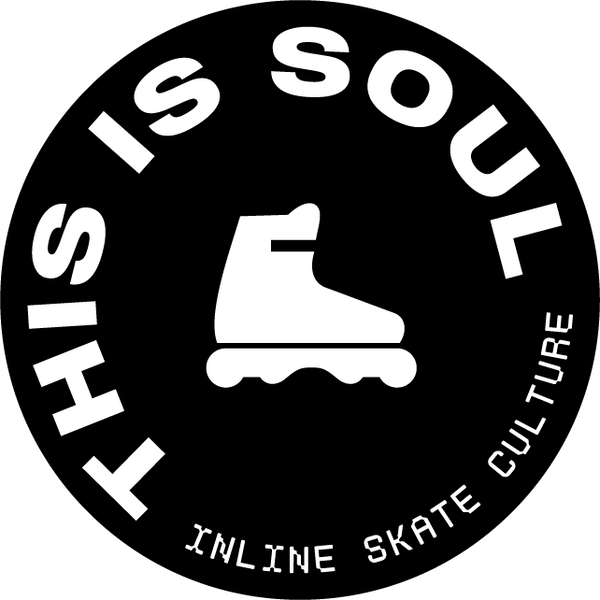Everything about grinding grooves
Short Answer:
Grinding grooves in aggressive inline skate frames help lock your skates onto rails or curbs, making grinds more stable and controlled. Key factors include the groove's depth, split (distance between center wheels), and wheel protection to prevent wheel bite.
The grooves
When it comes to aggressive inline skating, grinding grooves play a crucial role in locking onto surfaces like handrails or curbs. These grooves, designed into the frame, help you maintain balance during grinds, reducing the risk of slipping out. In this guide, we’ll explore the different types of grooves, their history, and how to choose the best one for your skating needs.
A brief history of grinding grooves
In the early days of aggressive skating, frames didn’t have grooves at all—they were just straight lines. Skaters wore down the material by grinding, which eventually created grooves. This was how the first grooves were "designed." Later, grind plates were introduced to strengthen the frame, and these plates featured the first intentional grooves. As frames evolved, the grooves became an essential part of the design, improving both control and durability during grinds.
What is a grinding groove for?
The main purpose of a groove is to help you lock onto rails and prevent slipping while grinding. When your skate locks onto a rail, the groove keeps it in place. This makes your grind more controlled. Grooves are crucial for stability, but other factors also affect performance. These include split, wheel protection, and groove height.
Grinding grooves are essential for aggressive skaters, but combining them with the right frame material and buckles can provide the control and durability you need to execute tricks smoothly.
Split: How distance between wheels affects grinding
The "split" refers to the distance between the two center wheels in your frame. This distance plays a major role in how your skates feel during grinds. A wider split offers more stability when locked onto a rail, while a narrower split may feel more natural when skating flat.
For example, the USD Aeon skate, with its integrated frame and boot design, has an exceptionally wide split—up to 14.5 cm in the largest size. The Wish frame also features a large split, around 14.8 cm, giving skaters plenty of room to lock onto a rail. However, some skaters feel that a split that is too wide takes away from the natural steering and rolling feeling, so finding a balance is important.
Wheel protection: Avoiding wheel bite during grinds
Wheel bite happens when your wheel touches the surface you’re grinding on, causing you to lose grip and fall. Frames with good wheel protection help prevent this. Modern frames, especially those designed for skating flat (four wheels on the ground), often feature design elements to protect the wheels from making contact with the grinding surface.
For instance, some frames lower the center wheels slightly, or feature thicker walls, which creates a more defined groove. Frames like the Kaiser Fluid 5 and Wish frames have good wheel protection, making them ideal for grinding without the risk of wheel bite.
Groove height: How close is the grinding groove to your foot?
The height of the groove in relation to your foot is another key factor. A lower groove (closer to your foot) provides more control during grinds. Frames like the Kaiser Fluid 3 have deeper grooves, which allow skaters to get lower during grinds, offering better balance and stability. On the other hand, frames with a higher groove may feel different depending on the width of the skate’s soulplate.
For example, if you use a skate with a wide soulplate, like the Razors SL, pairing it with a frame that has a higher groove can create the right grinding angle. Conversely, a skate with a smaller soulplate, like the Roces M12, might benefit from a frame with a lower groove.
Groove radius: The shape of the groove matters
The radius of the groove determines how curved or flat the groove is. A tighter radius creates a smaller, deeper groove, while a wider radius results in a more open groove. Some skaters mistakenly believe that a bigger groove is easier to grind on, but a larger radius can actually make it easier to slip out of your grind. A smaller radius groove, like on the Kaiser Fluid 5, offers a better lock, making your grinds more stable.
Conclusion: Finding the right groove for your style
Choosing the right groove for your frame depends on your skating style and the balance between riding and grinding. Consider factors like split, wheel protection, groove height, and groove radius to find a frame that suits your needs. Whether you prefer a deeper groove for better lock or a wider split for stability, understanding these elements will help you select the best frame for your setup.
For more information on frames and grinding grooves, visit our store or check out our webshop at Thisissoul.com.
Looking to upgrade your skates? Our Hardware Insights provide all the details on what works best and why. Get the lowdown on everything from shock absorbers to wheel compounds, and make the right choice for your skating style.
